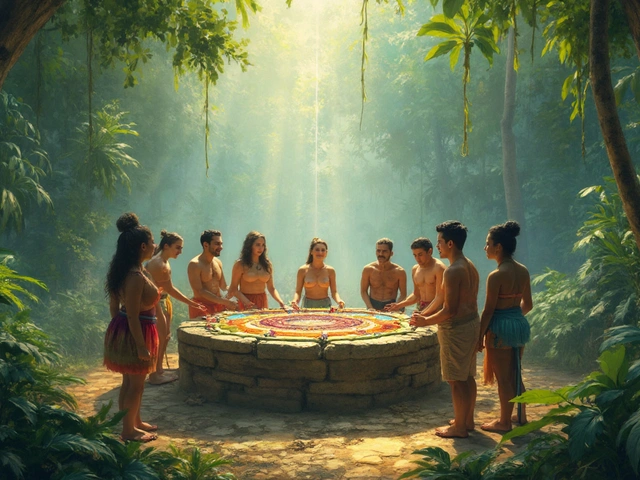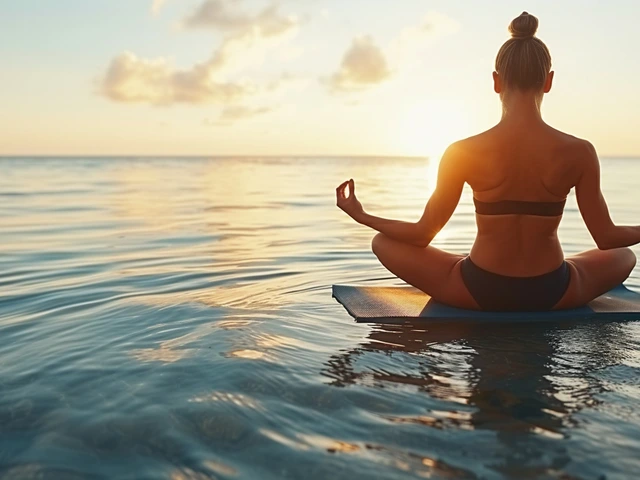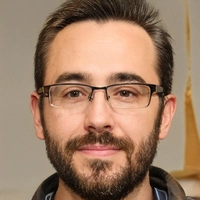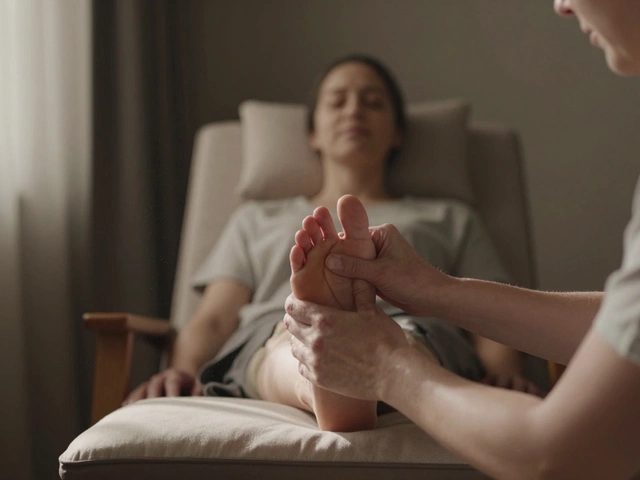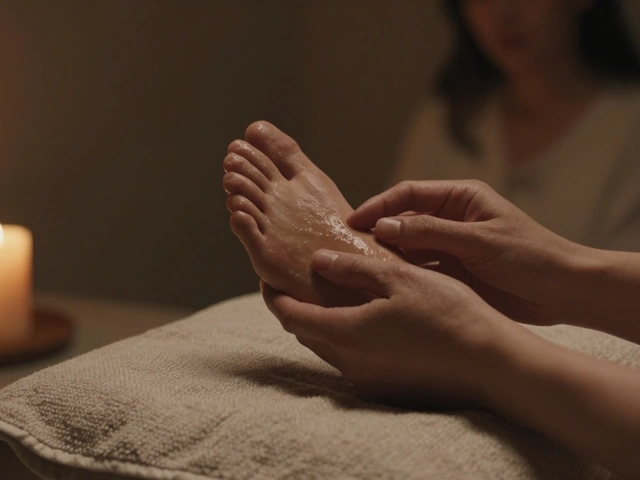Imagine a healing technique that taps into the life force energy to promote your well-being. This is what Reiki offers. Rooted in Japanese tradition, Reiki is a practice that helps individuals achieve a state of balance and health by manipulating the body's energy flow. It is based on the idea that an unseen 'life force energy' flows through us and is what causes us to be alive.
Reiki practitioners use a technique similar to the laying on of hands, aiming to channel energy to the patient in a way that jumpstarts the body's natural healing processes. The beauty of Reiki lies in its simplicity and effectiveness, making it accessible to anyone seeking a more balanced life.
- What is Reiki?
- Historical Background
- Principles of Reiki
- Benefits and Uses
- How to Practice Reiki
- Choosing a Reiki Practitioner
What is Reiki?
Reiki is an intriguing and potent form of healing that originates from Japan. The term 'Reiki' itself comes from two Japanese words - 'rei' (universal) and 'ki' (life energy). This practice was developed in the early 20th century by Mikao Usui. It operates on the premise that health issues stem from imbalances or disruptions in a person's energy flow, and that correcting these imbalances promotes healing. Reiki is a non-invasive method in which practitioners utilize their hands to channel energy to the recipient, enhancing the body's natural ability to heal itself.
The procedure is simple yet profound. A session usually lasts between 60 to 90 minutes during which the practitioner places their hands lightly on or just above the person's body in specific energy locations. There is no massage or manipulation. The practitioner's hands are simply held at each location, subtly shifting the flow of energy within the body and stimulating the person's own healing response. This could lead to sensations such as warmth, tingling, or a deep sense of relaxation, indicating the unblocking and movement of energy.
Core Principles of Reiki
Central to Reiki's philosophy are the Five Reiki Principles that Mikao Usui established. These principles are intended not just for healing but also for leading a fulfilling, balanced life. They consist of: do not worry, do not be angry, honor your parents, teachers, and elders, earn your living honestly, and show gratitude to every living thing. These guidelines help in promoting a peaceful and grounded lifestyle that enhances one's health.
The Role of Energy in Reiki
The concept of life energy which Reiki is based on, is also a common thread in other Eastern practices such as yoga and acupuncture. This energy, or 'ki', is considered the life force that circulates through all living beings. According to practitioners, when this energy is high, you are more capable of being happy and healthy. Reiki sessions aim to increase, balance, and smooth the flow of this energy in the body. Changes in the energy flow can often be felt immediately, sometimes described as a flow of electricity or a tingling sensation along the limbs.
Historical Background
The roots of Reiki can be traced back to the early 20th century, specifically to its founding by a Japanese Buddhist named Mikao Usui in 1922. Following a profound spiritual experience on Mount Kurama, a sacred mountain north of Kyoto, Usui developed this healing technique, which he initially called 'Usui Reiki Ryoho.' The essence of Reiki, derived from two Japanese words, 'rei' meaning 'universal' and 'ki' meaning 'life energy,' points towards the understanding of this practice as a system that harnesses the universal life energy for healing.
Usui's teachings emphasized the importance of personal improvement and spiritual self-cleansing, which he considered vital for transferring healing energy through one's hands, the primary method Reiki practitioners use to deliver their healing. After Usui's death, the practice was further developed and spread by his disciples. Among them was Chujiro Hayashi, a retired naval officer, who played a crucial role in bringing Reiki to broader demographics.
In the mid-20th century, Reiki began to transition to the Western world through Hawayo Takata, a Japanese-American who learned Reiki in Japan and started practicing and teaching it in Hawaii. Her efforts during the latter half of the 20th century fundamentally shaped Reiki’s footprint in the West. Takata taught Reiki as a unique blend of spiritual healing and therapeutic touch, emphasizing that it could be learned by anyone willing to dedicate themselves to understanding its principles.
Today, Reiki is practiced worldwide, with numerous practitioners and followers who embrace this technique not only as a form of healing but also as a spiritual pathway. Although it started as a closely guarded secret within the spiritual lineages of Japan, modern Reiki has evolved into various schools and branches, each interpreting the use of life force energy in slightly different ways. This global spread and diversification have significantly contributed to its popularity and acceptance in different cultural contexts around the world.
Principles of Reiki
At the core of Reiki's modus operandi are the Five Principles of Reiki, established by the founder of Reiki, Mikao Usui. These principles are intended not just as therapy guidelines, but also as a philosophy for fostering a healthy and balanced life. They are recited daily by practitioners and are seen as a way to improve emotional and spiritual well-being. Here are the five revered principles: Just for today, I will not be angry; Just for today, I will not worry; Just for today, I will be grateful; Just for today, I will do my work honestly; Just for today, I will be kind to every living thing. These principles underscore the importance of presence and mindfulness, emphasizing emotional healing which is often considered as important as physical healing.
Mikao Usui's focus was not only on healing the body but also on elevating the spirit by developing a strong personal character. Reiki practice is not only about healing others; it is also about healing oneself from within. This intrapersonal focus helps practitioners to achieve a sense of peace and satisfaction, which in turn augments their ability to heal others. The practice is closely tied with the concepts of mindfulness and meditation, encouraging a quieter, more reflective state of mind, which is understood to be beneficial for both emotional and physical health.
Energy flow in Reiki is another fundamental aspect. This therapy is based on the belief that a practitioner can channel energy into a patient by means of touch, to activate the natural healing processes of the patient's body and restore physical and emotional well-being. Here, the belief is grounded in the understanding that human bodies are fields of energy that reflect and interact with the physical and emotional state of a person. When the flow of energy is disrupted, it can lead to physical and emotional disturbances. A Reiki session aims to enhance the flow and balance of energy, which can lead to wellness and robust health.
Benefits and Uses
Reiki, as an ancient healing art, holds numerous benefits that cater to both the physical and emotional well-being of individuals. Practitioners and recipients alike report a wide range of improvements, such as enhanced relaxation and a profound sense of peace, which often follow a Reiki session. These sessions help individuals to unwind and relieve stress, which is so common in our fast-paced modern lives. Many people find that Reiki helps in reducing anxiety and depression by creating a space of serenity that impacts their overall emotional health.
The physical health benefits of Reiki are equally compelling. Users often report pain relief that can range from mild and nagging to chronic pain. Reiki is said to work by facilitating the natural healing processes of the body. It increases energy flow which can be paramount in addressing ailments and injuries. Moreover, many recipients speak of improved sleep patterns and a boost in immunity, suggesting that Reiki can be an excellent complement to traditional health practices. This holistic approach, focusing on the entire body, mobilizes its innate healing capabilities, proving effective in the management and recovery from illness.
Reiki also offers support for emotional healing. It often assists individuals in coping with grief, trauma, and emotional distress. For those undergoing medical treatments such as chemotherapy, Reiki has been found to be beneficial in managing side effects like nausea and fatigue. This supportive role of Reiki shows the adaptability and holistic coverage of this ancient practice in modern therapeutic settings. In addition to physical and emotional realms, Reiki can also lead to spiritual growth, granting individuals a better understanding of themselves and a deeper connection to the world around them.
From a practical standpoint, Reiki is used across various settings, including private practices, hospitals, and wellness centers. It is versatile and can be administered virtually anywhere, requiring no specific medical equipment. Practitioners typically perform sessions that can last from 30 to 90 minutes, making it adaptable to different needs and schedules.
"Reiki does not directly cure diseases or illnesses. Instead, it is used as a complement to traditional treatment and as a way to manage symptoms and improve overall well-being," explains a prominent health expert.
This gentle and non-invasive practice makes it an ideal choice for everyone, including those with chronic conditions, pregnant women, and the elderly. Integrating Reiki into one's health regime could potentially lead to significant life-quality improvements, making it a worthy consideration for those pursuing a holistic and balanced approach to health.
How to Practice Reiki
Embarking on the journey of practicing Reiki starts with understanding and respecting its profound spiritual essence. The first step is typically to seek training from a qualified Reiki Master. These practitioners have attained the highest level of Reiki mastery and are equipped to teach new students the essential techniques and symbols associated with Reiki energy manipulation. Training is divided into levels, starting with Level I, where you learn the basics of energy flow and how to perform Reiki on yourself.
After mastering self-Reiki, you proceed to Level II, often referred to as the practitioner's level. Here, students learn how to channel Reiki energy to others, both in-person and across distances, which is one of the remarkable features of Reiki. Level II training also delves deeper into the use of Reiki symbols that are said to enhance the practitioner's ability to connect and manipulate energies. It's a practice steeped in intention and focus, demanding mindfulness and dedication.
For those who want to fully integrate Reiki into their lives, achieving the Master level is the ultimate goal. This level of practice not only allows one to treat others but also to teach and attune new practitioners. Here, the nuances of Reiki are mastered, including advanced techniques that involve more profound manipulation of the energy field and the use of additional symbols. Master training is rigorous and requires a deep commitment to the Reiki path.
Practicing Reiki also involves regular self-treatment. It's recommended that practitioners, regardless of their level, conduct daily self-Reiki to maintain their energy balance and promote self-healing. This routine can help fortify the practitioner's energy reserves, enabling them to better serve others and handle the emotional and physical releases that can occur during sessions.
One of the remarkable aspects of Reiki practice is its accessibility. It requires no special equipment and can be performed almost anywhere. Sessions typically take place in a quiet setting where the practitioner can lay hands lightly on or just above the body, channeling energy according to specific needs. The environment plays a crucial role in enhancing the relaxation and effectiveness of the treatment.
Reiki is not just a technical skill but a lifestyle choice that emphasizes balance, peace, and wellness. Embracing Reiki fully means integrating its principles into your daily life, fostering an environment of healing and positivity not just for yourself, but for those around you. Many practitioners find that regular practice enhances not only their physical health but also emotional and spiritual well-being, echoing the holistic nature of Reiki.
Choosing a Reiki Practitioner
Finding the right Reiki practitioner is crucial for a beneficial Reiki experience. Since Reiki is a deeply personal journey, the connection between the practitioner and the recipient plays a significant role in the effectiveness of the healing. When beginning your search, it is important to look for someone who is not only skilled but also resonates with your personal energy and wellness philosophy. Certified practitioners who have undergone extensive training and have a profound understanding of the energy channels in the body are preferable.
It's advisable to start by asking for referrals from people who have had positive experiences with Reiki. Personal testimonials provide insights into the practitioner's abilities and the effects of their sessions. Moreover, professional associations for Reiki practitioners often maintain directories that list qualified professionals. These directories can be a reliable resource for finding well-trained practitioners who adhere to ethical standards prescribed by the governing bodies.
During your initial consultation, it is sensible to discuss your health background, goals, and any concerns you may have. This dialogue will help you feel out whether the practitioner's approach aligns with your needs. One essential tip is to observe how they communicate about their practice. A good practitioner will clearly explain the process, what you can expect, and how they structure their sessions, which typically involve a relaxed atmosphere where you may lie on a couch or sit comfortably while the practitioner works with your energy fields.
An important factor in choosing a Reiki practitioner is understanding the different levels of Reiki certification. From Level I, which focuses on self-healing, to Level II, often considered the practitioner level where one can start to treat others, and up to the Master level, where one is qualified to teach and attune others to Reiki. Ensuring that your practitioner has the appropriate level of certification for your needs enhances the credibility and likely efficacy of their treatment.
Additionally, it's beneficial to inquire about the practitioner's continued education in the field of energy healing. Ongoing learning and practice are good indicators of a professional who takes their role seriously, aiming to provide the most effective and updated techniques to their clients. It might also be comforting to know if they are involved in a professional community or follow a certain ethical code, further ensuring a commitment to responsible practice.
Lastly, trust your intuition. After gathering all the necessary information, reflect on your interactions with the practitioner. Do you feel comfortable and safe? Does your practitioner exhibit a calm and comforting demeanor? These feelings often guide one towards making the best choice for their personal healing journey.


